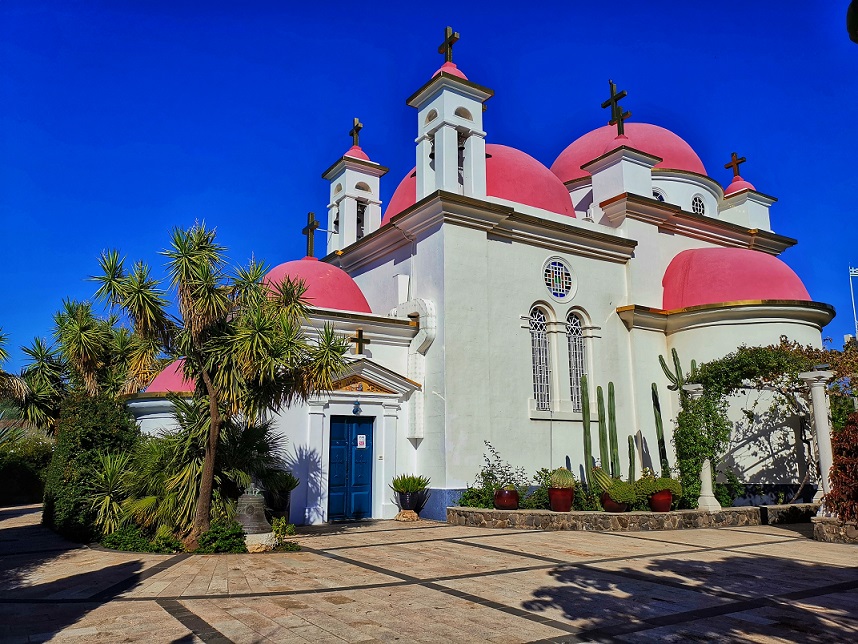Capernaum – in today’s Kfar Nahum – was the home of Jesus’s public ministry after he left Nazareth. As such, it contains many attractions, as well as breathtaking views.
Here you will find everything you need to know before visiting this holy city!
- Why is Capernaum important?
- Where is Capernaum located?
- What are the main Christian attractions in Capernaum?
- What should I know before visiting Capernaum?
- Are there any fun facts about Capernaum?
Why is Capernaum important?
Capernaum was the center of Jesus’s public ministry in Galilee after he left Nazareth.
Here, Jesus amazed his followers, for when he taught in the synagogue he healed a man who was possessed by an unclean spirit.
But this is only one of several miracles Jesus performed in this settlement. After healing the possessed man, Jesus healed Simon Peter’s mother-in-law of a fever, healed the servant of a Roman centurion who had asked for his help and healed the paralytic lowered by friends through the roof to reach Jesus.
Quite the miraculous place, isn’t it?

Where is Capernaum located?
Capernaum is located in today’s Kfar Nahum, in the north of Israel, right on the northern shore of the Sea of Galilee.
What are the main Christian attractions in Capernaum?
The are many Christian attractions in Capernaum.
The main ones include:
- Capernaum synagogue – here you will find ruins of the ancient Great Synagogue at Capernaum (or Kfar Nahum) from the 4th century CE.
These ruins are of a synagogue that is among the oldest synagogues in the world!
Beneath the foundation of this synagogue lies another foundation made of basalt, and this is likely the foundation of a synagogue from the 1st century, perhaps the one mentioned in the Gospels. - House of Peter – an Octagonal church, built around the house where Peter used to live.
You can now find there a modern church built above the excavated remains of the ancient house and the Byzantine octagonal church. The disk-shaped structure stands on concrete stilts, ensuring visibility to the ancient building. To top it off, a glass floor is located at the center of the church, and it allows direct view of the excavated remains below! - Church of the Holy Apostles – a Greek Orthodox church that marks the site of the ancient village of Capernaum. It is located at the beautiful Monastery of the Holy Apostles right on the shore of the Sea of Galilee.
What should I know before visiting Capernaum?
There is a beautiful national park at Capernaum, that offers panoramic views to all the churches, the Sea of Galilee, Golan Heights and even Mount Hermon.
For more information about Jesus in the Holy Land check out this amazing book on Amazon: 
Are there any fun facts about Capernaum?
Of course!
- Capernaum was heavily damaged in an earthquake that took place in 749 CE and was rebuilt later.
- The village was inhabited continuously from the 2nd century BC to the 11th century CE.
- It is not far from the Magrase Nature Reserve, which offers a lovely day trip in nature.

